Where is starch paste used and how to make it?

A paste cooked from ordinary starch is indispensable in the household. Such a substance is quite easy to prepare on your own, and it requires minimal costs.

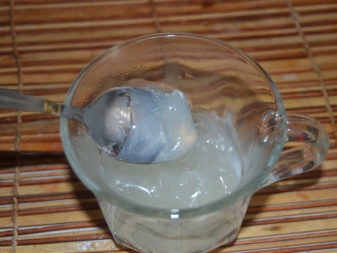
Applications
Starch paste allows you to accomplish many tasks, from making paper crafts to wallpapering... Thus, the adhesive substance is suitable for insulating window frames. The freshly prepared composition is evenly distributed over the paper strips, with which the cracks in the windows are then sealed. Starch paste is also useful for priming walls - it should be prepared according to the same recipe as for gluing wallpaper. By the way, so that over time bugs or mites do not appear on the surface, a small amount of salt is added to the composition. After the walls are primed with the composition, you can proceed to the final coating, that is, wallpaper of any type and color.
A high-quality mixture, when dry, will not leave any traces and will allow you to neatly decorate the walls.
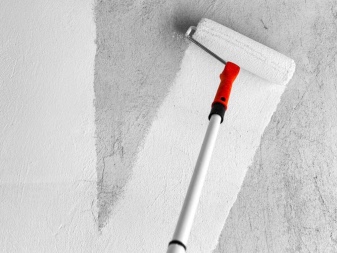

To create products from papier-mâché, it is used universal composition of the paste. A significant plus is that the transparent substance does not stain the paper after drying. The substance is often used for creativity with even the smallest children - after all, such an environmentally friendly glue is not toxic and does not cause allergies. If necessary, it will be quite easy to clean it from carpets, parquet floors, clothes or a work table. With starch paste, you can glue cotton wool to create cotton toys, glue frame products or connect pieces of colored paper. Potato starch glue can be used in corrugated board production, for processing paper and album bindings, and even for making seed belts.


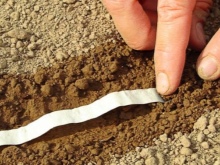
In general, different ingredients can be included in the starch paste. Corn flour will create a slightly cloudy and highly hardening substance. The shelf life turns out to be longer than that of other varieties. Wheat flour paste has a medium hardening capacity. This variety is especially popular in bookbinding. The transparent and clean potato starch paste is characterized by low hardening capacity. It quickly turns sour and changes its properties after being outdoors for a long time.
Strong paste made of rye flour resistant to dampness and is even suitable for pasting ovens.
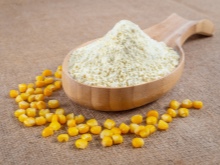

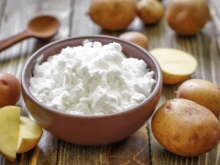
Step by step recipes
It is also possible to cook a paste from corn, wheat or potato starch at home. In principle, they are created according to the same recipes.
Classical
To prepare a gooey substance according to the classic recipe, you will need the starch itself, clean water, a metal brewing container and a stirring tool. The first thing you need to do is sift the mixture through a sieve into a deep bowl. Then cold water is poured there in a ratio of 2: 1. As a rule, there are 2 tablespoons of water for 4 tablespoons of starch, and this amount is just enough for crafts or repairing paper bindings. Naturally, with an increase in the amount of the dry component, the volume of the liquid also increases.
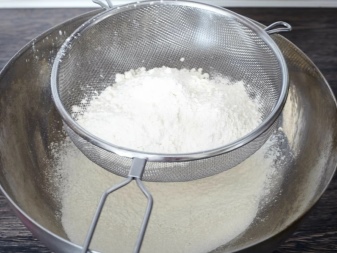
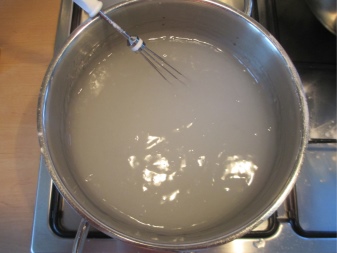
Water is poured into the starch in a thin stream, and at the same time the substance is stirred in a circular motion. This will be most conveniently done with an ordinary tablespoon or a culinary whisk.Next, the mixture will need to be diluted with a glass of boiling water. Water is again added in a thin stream. The ingredients should be kneaded until a thick jelly is formed. If the mixture turns out to be too liquid, then it can be put on a low heat for a couple of minutes.
While the paste is on the stove, it will also have to be stirred with a wooden or silicone spatula, without bringing to a boil.
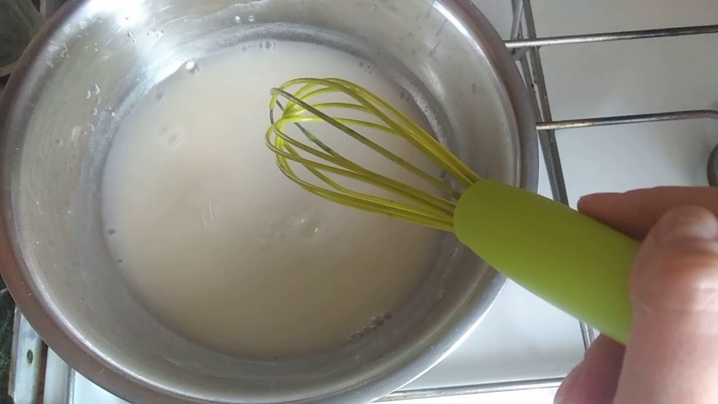
After removing the sticky substance from the heat, it will have to be kneaded until the substance cools down. Further, to achieve homogeneity, it can be filtered through cheesecloth. Apply the paste as soon as it cools down. By the way, if there is no starch in the store, then its potato variety can be cooked on its own. For this purpose, the top layer is removed from the kilogram of tubers, which is then rubbed on a coarse grater. Having squeezed out potato juice using gauze, it will be necessary to set aside the liquid for a while until a precipitate is released. After some time, the juice is drained, and the dried sediment is used as starch.

Papier-mâché craftsmen sometimes need a paste of increased durability. In this case, the starch is first kept in an oven at a high temperature until it acquires a pronounced brown hue. The resulting lumps are ground into powder in any available way, after which it will remain to be diluted with water in a proportion of 40 grams per 100 milliliters.
You can also add a teaspoon of sugar as a third ingredient, and then proceed to work.
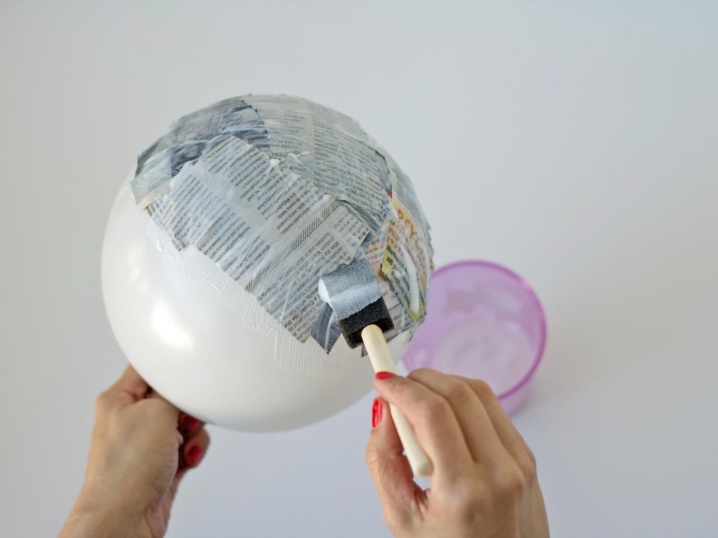
Another possibility to create a super-strong paste is to add calcium chloride to the composition. This drug in the amount of 40 grams is initially diluted in 600 milliliters of water and brought to a boil. Separately, 400 grams of starch is gradually combined with 400 milliliters of water. The two solutions, stirring constantly, are neatly combined. The glue base is supplemented with 4 liters of hot water, and the whole mixture is boiled for a couple of minutes over low heat. Having cooled the paste, it must be allowed to brew for a couple of hours, then strain.

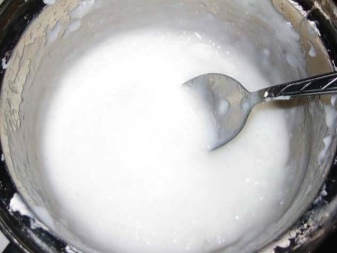
With flour
Some craftsmen prefer to make a paste with the addition of flour. In the first case, 3 tablespoons of starch and the same amount of flour are poured with 200 grams of cold water, after which the substance is thoroughly mixed. Next, an empty container must be filled with a glass of water, then put it on fire and bring to a boil. A starchy flour substance is carefully poured into the boiling liquid, everything is stirred and boiled for a couple of minutes until the consistency of liquid sour cream.
The paste must cool naturally before use.
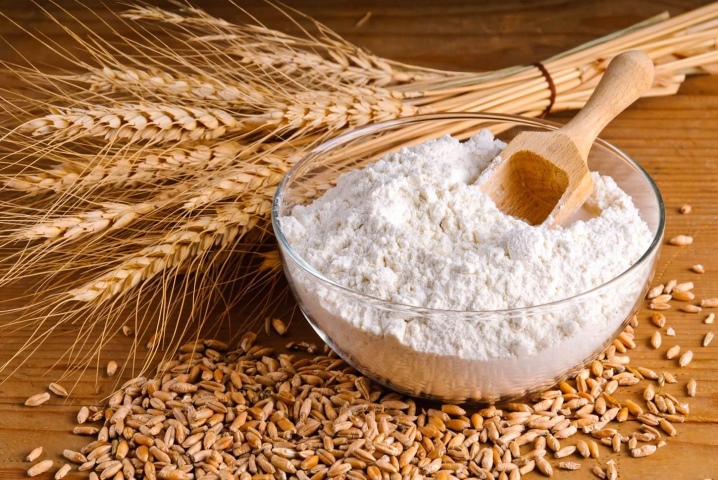
In the second case, a mixture of starch and flour is also poured with cold water and immediately put on fire. While stirring, the substance must be brought to a boil and obtain a sticky consistency. When the paste has cooled, you can also add a small amount of PVA to it. Strain the adhesive through cheesecloth, a sieve or even an old nylon stocking. It should be mentioned that when adding flour, you should not choose dark varieties that can spoil the shade of a light, almost transparent substance, and therefore lead to the appearance of stains.
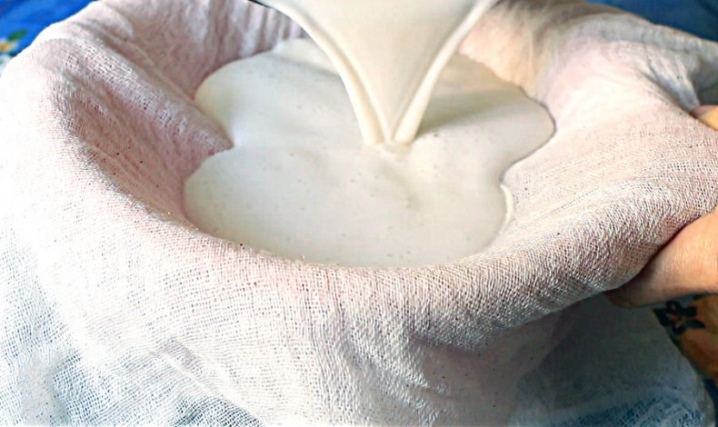
Application Tips
To increase the "docking" of surfaces, before use, it is recommended to add a small amount of PVA glue or even wood glue to the paste, depending on the purpose of use. The latter is more suitable for creating crafts or products using the papier-mâché technique, but it is categorically not recommended for gluing wallpaper in order to avoid the appearance of streaks and yellow spots.
In addition, experts believe that a thicker mass must be prepared for repairs, and a liquid mixture is suitable for crafts. Vitriol must be injected into the starch paste for seeds, which provides disinfection.
You can also improve the tackiness of the composition with gelatin.
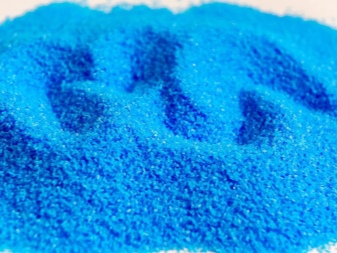
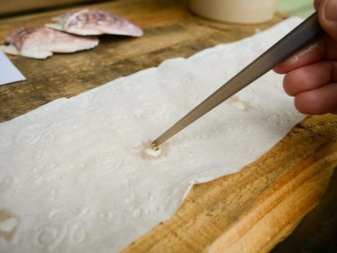
It is recommended to pour the finished mixture into a container that can be hermetically sealed. - for example, a plastic container with a lid or a glass jar with a plastic lid. It is more convenient to pour the amount necessary for work into a small dish. The thickened paste is easy to return to the desired state by adding 30 to 50 milliliters of water. If the mixture gets on the skin and dries up, it will be enough to rinse it under the tap.
It will be possible to save too liquid paste by adding a dry component - that is, starch or its mixture with flour. However, you should not pour the powder directly into the container with the prepared mixture - this will contribute to the formation of lumps. The previously dry ingredient will have to be mixed with a little water in a separate container until a batter-like consistency is reached. The resulting substance is poured into the paste, everything is mixed well and brought to a boil.
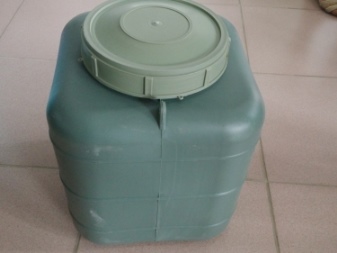

Cooking mistakes
People who make a paste for the first time often make one of three common mistakes. The first consists in initially pouring the dry mixture into freshly boiled water, as a result of which a large number of lumps are formed, and the characteristics of the adhesive mass deteriorate. It will be correct to first mix the powder in a small amount of water to swell the composition, and then boiling water is added.
The second mistake looks like this: the dry ingredient is poured into the water, which is why lumps are formed. Everything should be the other way around - that is, cold water is poured on top of the starch or its mixture with flour.
Finally, the third important mistake is the lack of constant stirring. If this is not done, then both starch and flour will settle to the bottom, which means that the paste will be spoiled.

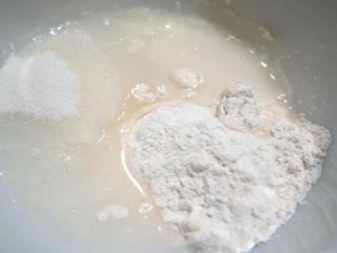
Storage rules
It is not allowed to store the paste for more than three days., therefore, initially it should not be cooked in excessive quantities. It should be placed for this period in a hermetically sealed container, which is then removed to the refrigerator or cellar. Some craftsmen, however, limit themselves to a securely sealed plastic bag. It is important to remember that under normal conditions, without loss of quality, the substance is stored for no more than 24 hours. If salt or sugar is present among the components, then its shelf life is reduced.
A paste that has thickened during storage can be revived by adding a small volume of boiling water, thoroughly mixing and filtering. It is important to get rid of all the lumps that have appeared during this time. If a crust appears on the surface, then it is simply removed, but the appearance of mold will require discarding the composition.

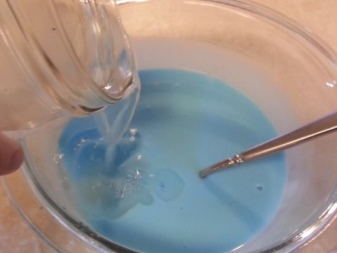













The comment was sent successfully.